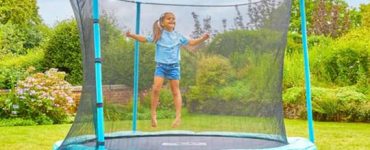Health is the number one thing in our lives. It is reflected in every aspect of our lives. Good health can make us look radiant and energetic. Healthy hair enables us to be more confident and attractive. No matter if you choose shorter or longer hairstyles, wigs with braids, or small knotless braids, taking good care of your hair allows it to remain healthy and resilient. Additionally, regular maintenance guarantees that wigs, extensions, or weaves remain longer and look their best. Here are some significant hints to keep your hair healthy under any style.
Begin with tidy hair
The cornerstone for healthy hair is good cleanliness. For best results, shampoo and condition your hair at least twice per week to eliminate product buildup, environmental toxins, and oil. Aim to use sulfate-free, hair-specific products wherever possible. The natural oils on the scalp are distributed and dirt is removed by daily brushing. While protective Knotless Braids Styles lessen the need for daily washing, they should still be cleaned with a moisturizing shampoo at least once a week to prevent buildup. Use leave-in moisturizers and conditioner on the roots.
Tender care
One of the most crucial parts of maintaining your natural hair while sporting a braided wig is to stay away from tight hairstyles. High ponytails and buns are two tight hairstyles that can put a lot of strain on your hairline and cause hair loss or damage. This is particularly true if you wear your wig for a longer period of time, as the frequent pulling and straining on your hairline may result in permanent damage.
Avoid using hair elastics that are too little or too tight, which is a further vital piece of advice. It’s necessary to use elastics that are delicate and won’t pull or drag on your hairline because they can harm your hair and scalp. Search for elastics made especially for thick or curly hair; these are frequently softer and less prone to harm the hair.
Reduce styling with heat
The hair cuticle is damaged by heat from hair dryers, curling irons, and flat irons, which results in dryness, frizz, and breakage. Use the lowest heat setting and try to limit the use of heat styling to twice per week. Before style, use a heat-protectant product. You’ll probably use heat less frequently if you wear protective clothing. Let your Braided Wigs air dry after washing rather than applying too much heat.
Profit from delicate detangling treatments
For easier brushing, brush hair while it’s moist and treated with a leave-in conditioner. Use a wide-tooth comb or a detangling spray made for your hair type to remove very tough tangles. Start at the ends and work your way up to the roots while working in manageable, little parts. Being impatient can lead to unneeded breakage. Specialized detangling techniques are needed to take down protective styles. To detangle braids and extensions without damaging them, get professional advice on the best methods and tools.
Make routine trims
Through the removal of split and damaged ends, routine trims encourage growth. Trims should be scheduled every six to eight weeks. To minimize length loss yet eliminate split ends, ask your hairdresser about dusting or V-shaped cuts. More frequent trims are necessary to reduce breaking caused by mechanical damage from protective styles. Get your natural hair cut after each installation of your Small knotless braids, and have them redone every four to six weeks.
Click on the proper products
Your hair’s needs should be met by the items you use on it and on your scalp. Look for lightweight, swiftly absorbing solutions that are cone-free. Consider using leave-in conditioners, argan oil, or hair masks if you have damaged ends. Volume-boosting mousses and serums for fine, limp hair hydrate hair strands.
Conditioning your strands
For optimal development, keeping hair moisturized is essential. Especially after cleansing, apply leave-in conditioners or hair masks. Shea butter, olive oil, and coconut oil all hydrate and lock in moisture. Rehydrate with a spray bottle of water and a few drops of oil for extended styles. Protective hairstyles can strain strands and lead to breakage; as a result, moisturizing them with products rich in fatty acids, hydrolyzed protein, and ceramides strengthens and restores them.
Conclusion
Whether you’re looking to try out a new hairstyle or simply want to protect your natural hair, braided wigs can be a great option. By following these tips and tricks for caring for your natural hair and your wig, you’ll be able to achieve a beautiful, healthy look that you can be proud of. So go ahead and try out some of these knotless braids styles!
























